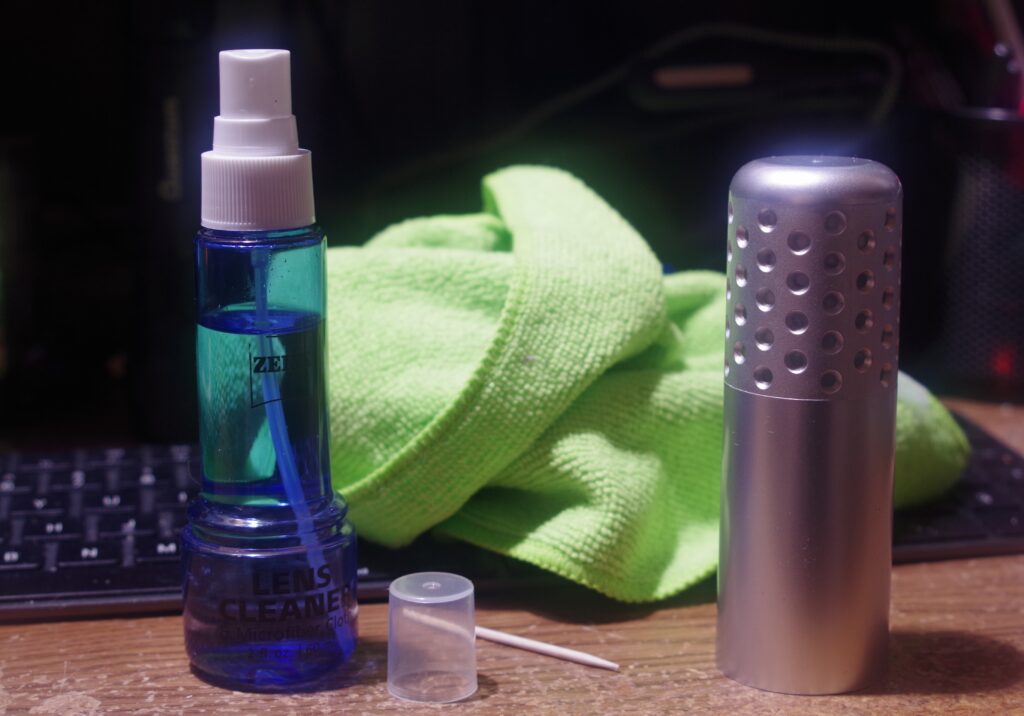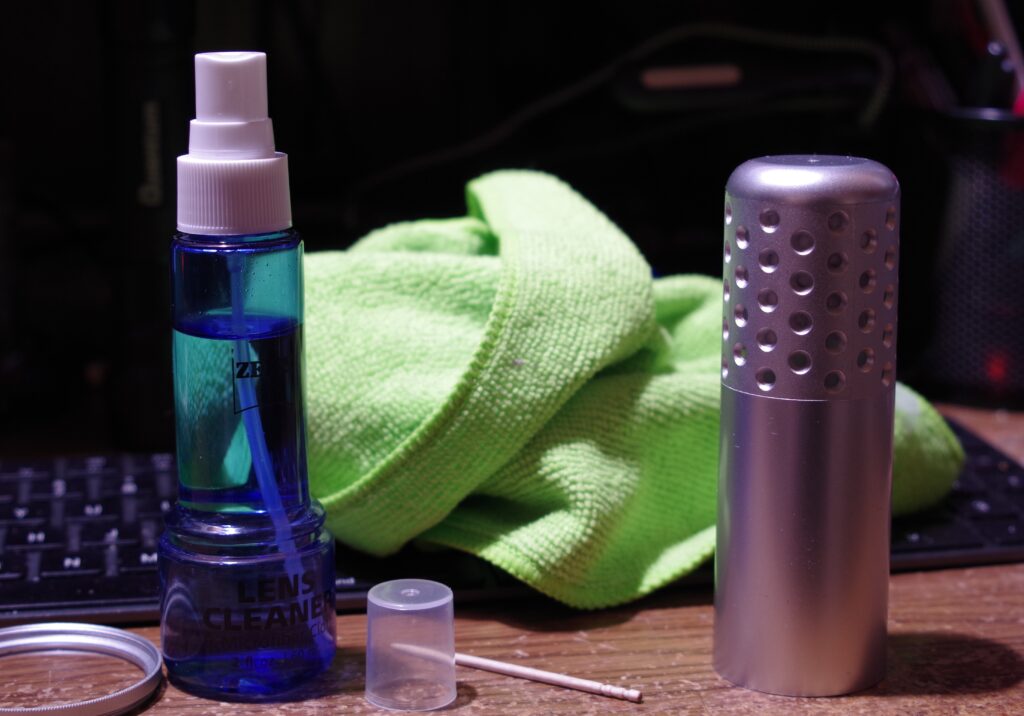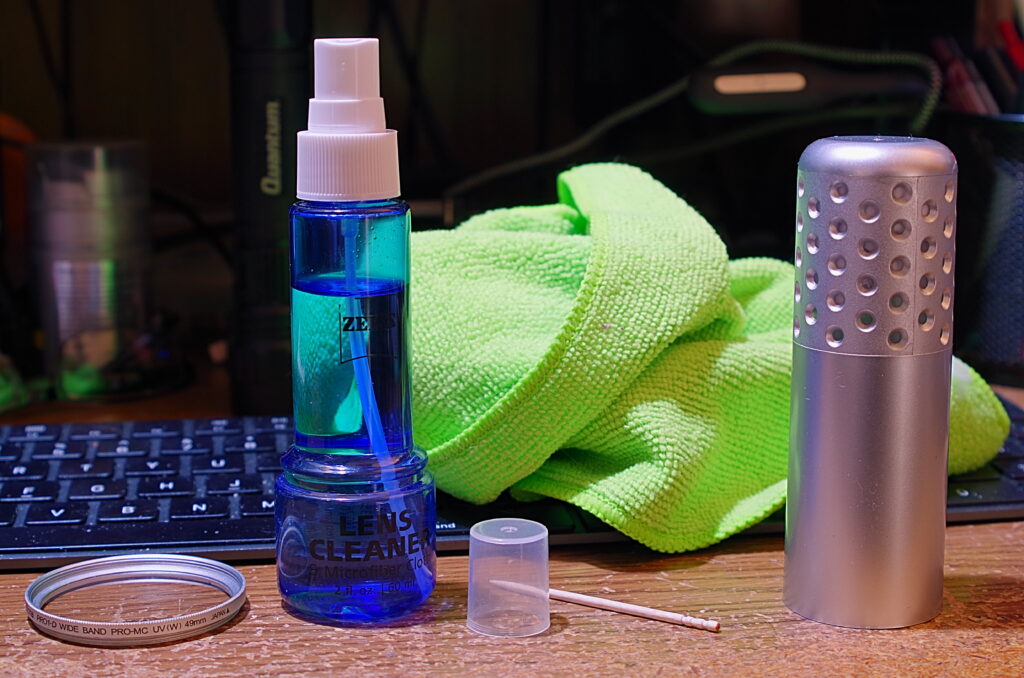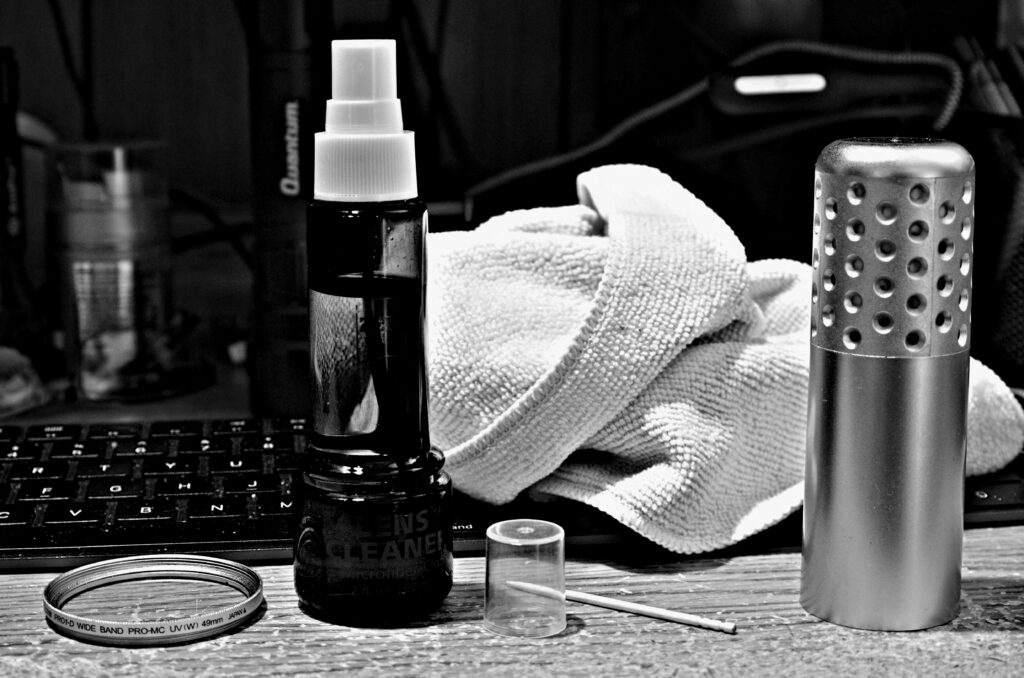Over the years, I spent lots of money on lenses, and splurged to get the finest “protective” filters I could find. I felt “protected”—and smug in the knowledge that all that expensive glass would not fall victim to fingerprints , sticky pollen, scrapes, scratches and “the thousand natural shocks that … lenses are heir to” (apologies to Shakespeare). I got some pretty good images, but under certain bright and contrasty lighting conditions, I also had some inexplicable failures to control flare as well as the lenses were claimed to do.
I was at one of my favorite scenic locations by a large lake, and I was disappointed by the fuzzy results I was getting with a reputedly sharp zoom. I removed it and removed the filter while I cleaned the front and back elements. Looking through the lens in the direction of some waves reflecting the sun, I didn’t see any haze, dust or fungus, so I mounted the lens and proceeded to redo the lens calibration. When I was satisfied, I took some scenic shots and I was amazed at how much sharper they were.
I noticed I hadn’t put the filter back on, and so I cleaned it, front and back, and threaded it back onto the lens. I took another scenery shot, and … DISAPPOINTMENT filled the frame! Soft, mushy rendering, like it was out of focus, or worse.
I autofocused on infinity, then switched to Live View and magnified the image. It was bad. I manually adjusted the focus and was able to correct it for the most part, but now I could see what looked like flare… or was it ghosting?
After removing the filter I tried checking the autofocus against LV, and found them to be in complete agreement with each other! Bad filter? Not at the premium price I paid for a highly respected brand name, beautifully multi-coated slice of glass.
So, I read up on the subject, and the experts seem to more or less agree that filters are a mixed blessing, and that its a good practice to only use them when absolutely necessary. It’s not just a digital problem—it happened with film as well. In high quality lenses, every element is engineered to work well with all the others. When we add another element its refraction is added to the mix in random ways the lens designers could not anticipate.
In the days before autofocus, focus shift didn’t much matter, because you focused until you liked the results. But our modern cameras allow autofocus with an offset to correct for each lens’ propensity to back-focus or front-focus and apply the offset from where the sensor thinks the image is “in focus.”
Oh, for the simpler days of silver halide salts on acetate bases that were more or less in the focal plane by a dozen microns or so, and we all just shot at f:11 and hoped a lot. But I don’t want to give up today’s outstanding image quality, resolution, sharpness, color rendition, dynamic range, and so many more important characteristics that were not possible with film.
Comparison
Here’s a sample shot to test the theory. Same lens, same exposure, same focus point. Only the filter was removed to protect the Image Quality!
As you can see, where the silver object has a bluish halo hovering above it, the second image (without the filter) has none. There is overall improved contrast, increased detail and the reduction of reflections/ghosts/”flare” allows the smc Pentax-FA lens to live up to its stellar reputation.
I tried an in-camera, 0/-1/+1 EV HDR composite, and also some monochrome effects that benefited from the extra contrast, and the reduction in unwanted artifacts. Don’t you just want to reach out and touch the towel? (Note to self: When using in-camera B&W emulation with contrast enhancement, kick the exposure up 1 EV, or the gamma up by 15-20.
And here’s the scenic lake shot that started it all…















